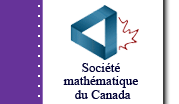6 articles trouvés pour ce sujet.
 |
 |
 |
 |
 |
 |
 |
 |
|
A periscope |
2009-10-05 |
 |
likhitha pose la question :
In a periscope, MIRRORS ARE PLACED PARALLELLY.Then why they do not form multiple images
Robert Dawson and Chris Fisher lui répond. |
 |
 |
 |
 |
 |
|
Two mirrors |
2007-10-24 |
 |
Peter pose la question :
The reflecting surfaces of two intersecting flat mirrors are at an angle θ (0° < θ < 90°). For a light ray that strikes the horizontal mirror, show that the emerging ray will intersect the incident ray at an angle β = 180° – 2θ.
Stephen La Rocque lui répond. |
 |
 |
 |
 |
 |
|
Lines of symmetry |
2002-04-22 |
 |
Cindie pose la question :
How many lines of symmetry do the following figures contain? trapezoid: rhombus: hexagon: pentagon:
Walter Whiteley lui répond. |
 |
 |
 |
 |
 |
|
Parabolic mirrors |
1999-11-07 |
 |
Andy White pose la question :
I am working on a project concerning parabolic mirrors. I need to create a mirror to focus sunlight on a focal point, but I don't know how to do it. Is there some equation that tells where a focal point will be in relation to a parabola? What is a directrix?
Penny Nom lui répond. |
 |
 |
 |
 |
 |
|
Satellite dishes |
1999-02-10 |
 |
Katherine Shaw pose la question :
I have read your information on 'Why are satellite dishes parabolic", and I know the reciever should be placed at the focus of the parabola. Could you test this with lights beams and a parabolic mirror, or would light beams behave differently. Thanks.
Jack LeSage and Harley Weston lui répond. |
 |
 |
 |
 |
 |
|
Parabolic Mirrors |
1997-01-28 |
 |
Megan Wennberg pose la question :
Consider a ray of light that passes through a chord of a parabola (the chord is above the focus and parallel to the directrix), hits the parabola at a point (x,y) and is reflected through the focus. If d1 is the distance from the chord to the point of incidence (x,y) and d2 is the distance from (x,y) to the focus, can you prove that the sum of the distances d1+d2 is constant, independent of the particular point of incidence.
Penny Nom lui répond. |
 |
 |

